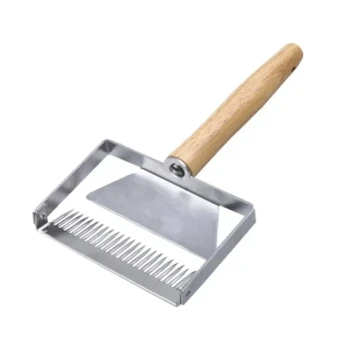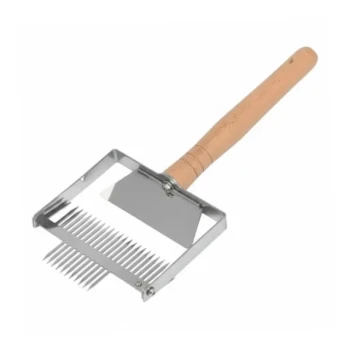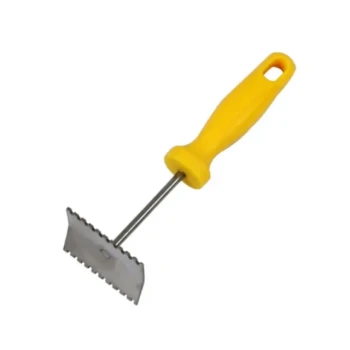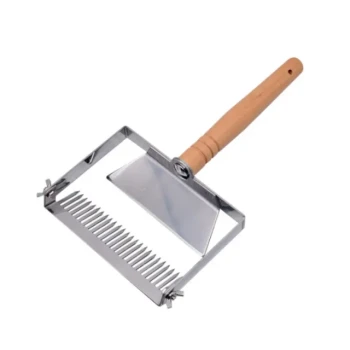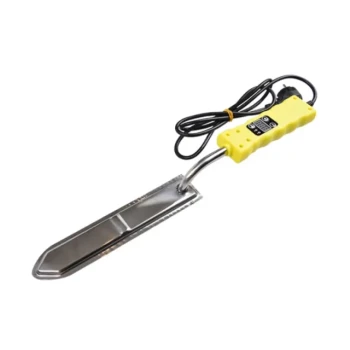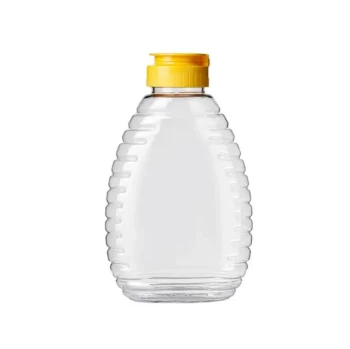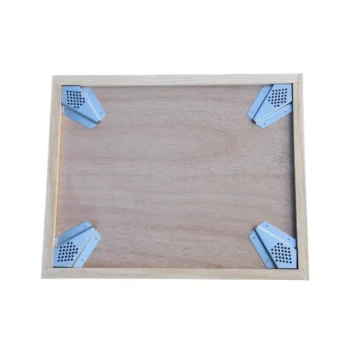At its core, queen rearing is divided into two fundamental strategies. The first is grafting, the traditional and widely-practiced method of manually transferring a newly hatched larva from a worker cell into an artificial queen cup. The second category consists of various non-grafting systems that cleverly induce a queen to lay her eggs directly into prefabricated cell cups, completely bypassing the delicate transfer process.
The choice between queen rearing methods is not just about technique—it's a strategic decision balancing manual skill and precision (grafting) against system-based efficiency and reduced larval damage (non-grafting). Understanding this core trade-off is the key to selecting the right approach for your operation.

The Foundational Methods of Queen Rearing
To create a new queen, beekeepers must convince a colony to feed a female larva an exclusive diet of royal jelly. Both primary methods achieve this by isolating a chosen egg or larva in a special cup, signaling the nurse bees to begin this process. The key difference lies in how the larva gets into that cup.
Method 1: Grafting - The Traditional Standard
Grafting is the art of manually moving a day-old larva from its original worker cell into a man-made queen cup.
This process requires a specialized grafting tool, good lighting, and often magnification. The beekeeper carefully scoops the minuscule larva, along with a bit of its royal jelly, and places it in the new cup.
Success hinges on selecting a larva of the correct age—ideally less than 24 hours old. A steady hand and a gentle touch are critical to avoid injuring the delicate larva.
Method 2: Non-Grafting Systems - Engineering for Simplicity
Non-grafting systems are designed to eliminate the most difficult step: the manual transfer.
These methods use a kit, such as a Jenter kit or Cupkit, which consists of a plastic comb box or frame. The beekeeper confines the queen in this box for a short period, forcing her to lay eggs directly into removable plastic cell cups.
Once the eggs are laid, the beekeeper can simply remove the plugs containing the eggs (or newly hatched larvae) and place them onto a frame for introduction into a queenless "cell builder" colony.
Understanding the Trade-offs
Neither method is universally superior. The best choice depends entirely on the beekeeper's goals, skill level, and scale of operation.
Grafting: Precision and Scale
The primary advantage of grafting is control. A skilled beekeeper can select larvae from their very best colonies, ensuring the desired genetics are passed on.
Grafting is also infinitely scalable. For commercial queen producers who need to raise thousands of queens, the speed and low material cost of grafting are unmatched once the skill is mastered.
The significant downside is the steep learning curve. It requires practice, excellent eyesight, and dexterity. Damaging larvae during transfer is a common point of failure for beginners.
Non-Grafting: Accessibility and Reliability
The clear benefit of non-grafting systems is their accessibility. They remove the need for manual dexterity and good vision, making queen rearing possible for a much wider range of beekeepers.
These systems also eliminate the risk of injuring the larva during transfer, which can lead to higher initial success rates for novices.
The main trade-offs are the initial cost of the kit and a potential reluctance of some queens to lay eggs in the plastic cassette. For very large-scale operations, managing the kits can be more cumbersome than simply grafting.
Making the Right Choice for Your Apiary
Your operational goals should guide your decision. Both methods are proven paths to producing high-quality queens when executed properly.
- If your primary focus is large-scale commercial production: Master the art of grafting for its unparalleled control, low cost, and scalability.
- If you are a hobbyist or small-scale beekeeper: Consider a non-grafting system to reliably produce a few high-quality queens without the steep learning curve of grafting.
- If you struggle with eyesight or manual dexterity: A non-grafting system is the clear and superior choice, as it bypasses the most technically demanding step.
Ultimately, both paths lead to the same destination—a well-fed larva in a queen cup—and choosing the right one depends entirely on your personal skills, goals, and resources.
Summary Table:
| Method | Core Process | Key Advantage | Best For |
|---|---|---|---|
| Grafting | Manual transfer of larva into queen cup | Maximum control and scalability | Commercial producers, large-scale operations |
| Non-Grafting | Queen lays eggs directly into cell cups | Accessibility and higher beginner success rates | Hobbyists, small-scale beekeepers, those with dexterity challenges |
Ready to Master Queen Rearing?
Whether you're a commercial apiary scaling up production or a distributor supplying beekeepers, having the right equipment is fundamental to success. HONESTBEE supplies durable, precision-crafted queen rearing supplies—from grafting tools to complete non-grafting systems—designed for efficiency and high acceptance rates.
Let us equip your operation for success. Contact our wholesale experts today to discuss your specific needs and volume pricing.
Visual Guide

Related Products
- No Grafting Queen Rearing Kit: System for Royal Jelly Production and Queen Rearing
- Plastic Chinese Queen Grafting Tool for Bee Queen Rearing
- Brown Nicot Queen Cell Cups for Breeding Queen Bees Beekeeping
- JZBZ Push-In Queen Cell Cups for Beekeeping
- Extra Wide Stainless Steel Honey Uncapping Fork with Scraper Beekeeping Tool
People Also Ask
- What are the developmental periods for different bee castes? Master the 16, 21, and 24-Day Timelines for Hive Success
- What are the stages involved in queen raising? A Guide to Controlled, High-Quality Queen Production
- What should be done once eggs are present in the comb box? A Guide to Maximizing Queen Rearing Success
- What is the timeline for queen breeding? A 28-Day Guide from Egg to Laying Queen
- What do queen rearers do with queens that fail to lay on time? The Critical Quality Control Decision




